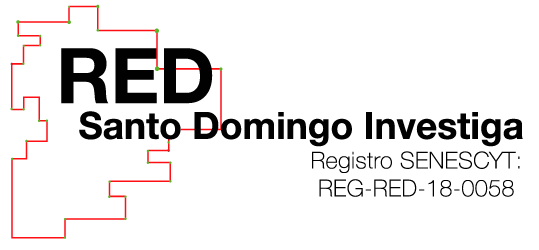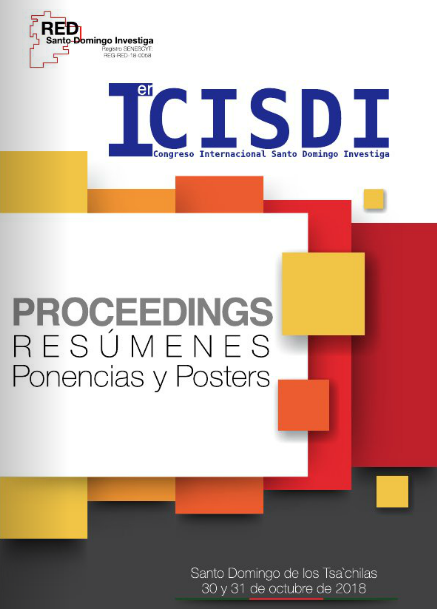EFECTO DEL CHOQUE TÉRMICO EN LA GERMINACIÓN DE SEMILLAS DE BALSA (Ochroma pyramidale) BAJO CONDICIONES DE LABORATORIO
EFFECT OF THERMAL SHOCK IN BALSA SEED GERMINATION (Ochroma pyramidale) UNDER LABORATORY CONDITIONS
Ing. Alexander Meza L., MSc.
Esta dirección de correo electrónico está protegida contra spambots. Necesita activar JavaScript para visualizarla.
Instituto Tecnológico Superior “Calazacón”
Nathaly Aguilar
Esta dirección de correo electrónico está protegida contra spambots. Necesita activar JavaScript para visualizarla.
Instituto Tecnológico Superior “Calazacón”
Diana Alava Cruz
Esta dirección de correo electrónico está protegida contra spambots. Necesita activar JavaScript para visualizarla.
Docente Investigadora ULEAM - Ext. El Carmen
Ing. Cristian Tapia.
Esta dirección de correo electrónico está protegida contra spambots. Necesita activar JavaScript para visualizarla.
Instituto Tecnológico Superior “Calazacón”
RESUMEN
La presente investigación se realizó en la provincia de Santo Domingo de los Tsa´chilas, en el Instituto Tecnológico Superior Tsa´chila, con el objetivo de evaluar el choque térmico bajo condiciones de laboratorio, en semillas balsa (Ochroma pyramidale) y germinadas en invernadero. Las semillas se calentaron en una estufa de laboratorio de convención forzada, en un rango de temperaturas (de 23 a 170 ° C) y tiempos de exposición (de cero a 30 minutos) similares a los obtenidos en las capas superficiales del suelo durante el invierno y también en los incendios naturales. En total, se realizaron veintiuno tratamientos implementados en un Diseño Completamente al Azar, con la evaluación de las variables porcentaje de germinación y emergencia de plántula. Se registraron los datos a partir del segundo día después de la siembra en invernadero. Los resultados del ANOVA realizado para la variable porcentaje de germinación a los 8 días mostraron que la temperatura tuvo un efecto significativo (p<0.05) entre tratamientos, siendo el T6 (105°C a 10 min.) y T9 (105°C a 25 min.) estadísticamente superiores a los demás con el 46,43%; para la variable días a la emergencia de plántula las diferencias estadísticas fueron significativas (p<0.05), en donde se destacan los siguientes tratamientos que comparten rango estadístico: T4 (75°C a 25 min.) con 3,07 días, T12 (130°C a 3 min.) 3,43 días, T14 (130°C a 10 min.) con 3,57 días, T19 (170°C a 1 min.) con 3,57 días, T8 (105°C a 15 min.) con 3,64 días, T3 (75°C a 20 min.) con 3,64 días, T20 (170°C a 2 min.) con 3,71 días, T5 (75°C a 30 min.) con 3,79 días, y T11 (130°C a 1 min.) con 3,71 días. Se concluye que la temperatura y el tiempo de exposición en la semilla de balsa (Ochroma pyramidale) tiene un efecto significativo en su porcentaje de germinación y emergencia de plántula, resultados que permitirán un mejor manejo técnico de viveros forestales.
Palabras Clave: emergencia de plántula, temperatura, tiempo de exposición, convención forzada.
SUMMARY
The present investigation was carried out in the province of Santo Domingo de los Tsa'chilas, in the Tsa'chila Superior Technological Institute, with the objective of evaluating the thermal shock under laboratory conditions, in balsa seeds (Ochroma pyramidale) and germinated in a greenhouse. The seeds were heated in a forced convention laboratory stove, in a range of temperatures (from 23 to 170 ° C) and exposure times (from zero to 30 minutes) similar to those obtained in the surface layers of the soil during the winter and also in natural fires. In total, twenty-one treatments implemented in a Completely Random Design were carried out, with the evaluation of the variables germination percentage and seedling emergence. Data were recorded from the second day after sowing in the greenhouse. The results of the ANOVA performed for the variable percentage of germination at 8 days showed that the temperature had a significant effect (p <0.05) between treatments, being the T6 (105 ° C to 10 min.) And T9 (105 ° C to 25 min.) Statistically superior to the others with 46.43%; For the variable days to the emergence of the seedling, the statistical differences were significant (p <0.05), where the following treatments that share the statistical rank stand out: T4 (75 ° C to 25 min.) with 3.07 days, T12 ( 130 ° C to 3 min.) 3.43 days, T14 (130 ° C to 10 min.) With 3.57 days, T19 (170 ° C to 1 min.) With 3.57 days, T8 (105 ° C) to 15 min.) with 3.64 days, T3 (75 ° C to 20 min.) with 3.64 days, T20 (170 ° C to 2 min.) with 3.71 days, T5 (75 ° C to 30) min.) with 3.79 days, and T11 (130 ° C to 1 min.) with 3.71 days. It is concluded that the temperature and the time of exposure in the balsa seed (Ochroma pyramidale) has a significant effect in its percentage of seedling germination and emergence, results that will allow a better technical management of forest nurseries.
Keywords: seedling emergence, temperature, exposure time, forced convention.














